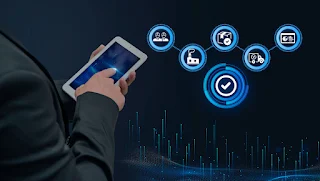As businesses continue to face increasing data threats, the future of Data Loss Prevention-as-a-Service (DLPaaS) is becoming more critical than ever. Companies are recognizing the need for advanced security solutions that not only protect sensitive data but also adapt to new challenges in the digital environment. The following trends will shape the future of DLPaaS and play a key role in keeping organizations secure.
1. AI and Automation Enhancing Data Protection
The integration of artificial intelligence (AI) and automation into Data Loss Prevention-as-a-Service solutions is on the rise. These technologies can detect potential threats faster and more accurately than traditional methods, reducing the response time and minimizing the risk of data breaches. By automating routine tasks, businesses can focus on more strategic aspects of security.
2. Cloud-Based DLPaaS
With more companies shifting to cloud services, cloud-based DLP solutions are becoming essential. These solutions allow businesses to monitor and protect data across multiple platforms, providing greater flexibility and scalability. As cloud adoption continues to grow, the demand for cloud-specific DLPaaS will also increase, ensuring that data is protected wherever it resides.
3. Integration with Other Security Tools
For DLPaaS to be most effective, it needs to integrate seamlessly with other security tools such as firewalls, intrusion detection systems, and endpoint protection. This integration allows for a more unified approach to data security, ensuring that all points of entry and exit are protected. As organizations invest in more comprehensive security suites, the need for DLPaaS that works with existing solutions will be crucial.
4. Focus on User Behavior Analytics (UBA)
User Behavior Analytics (UBA) is a growing trend in DLPaaS, where solutions can track and analyze user activities to detect unusual behavior that may indicate a security breach. This helps organizations identify potential threats based on actual user actions, improving threat detection and response.
5. Regulatory Compliance and Data Privacy
As data privacy laws become more stringent worldwide, businesses will need DLPaaS solutions that help them meet compliance requirements. Providers will offer features that automate compliance processes and ensure that sensitive data is handled according to legal standards. DLPaaS will play a significant role in helping organizations manage and secure data in line with regulations like GDPR, HIPAA, and CCPA.
6. Encryption as a Standard
Encryption will continue to be a fundamental aspect of data protection in DLPaaS. As data travels across networks, encrypting it ensures that even if it’s intercepted, it remains unreadable to unauthorized individuals. This trend will increase as businesses look to ensure end-to-end protection, especially in industries handling large amounts of sensitive data.
Conclusion
The future of Data Loss Prevention-as-a-Service is bright, with emerging trends that will make it even more efficient and indispensable for businesses. By adopting advanced technologies like AI, focusing on cloud-based solutions, and integrating with other security tools, organizations can ensure that their data remains secure in an increasingly complex digital environment. As regulatory demands grow, DLPaaS will continue to be a key solution in data protection strategies across industries.






